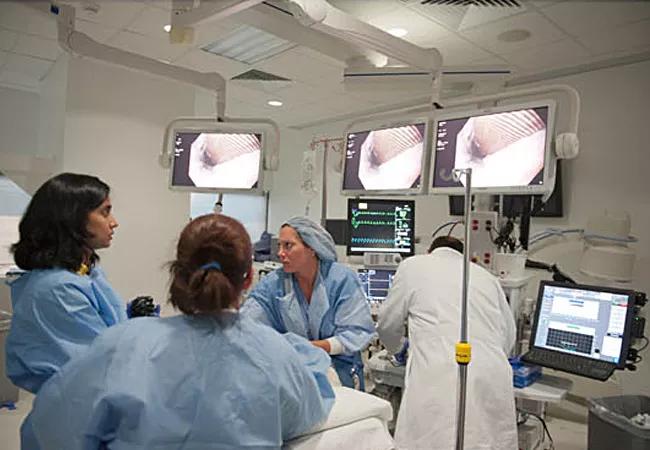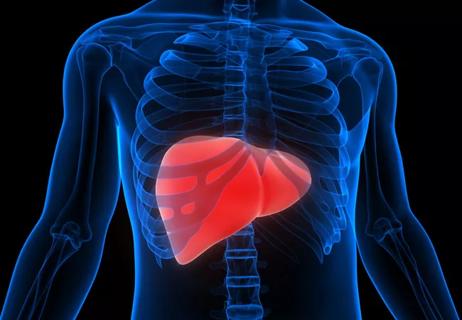Light shed on controversial surveillance

Advertisement
Cleveland Clinic is a non-profit academic medical center. Advertising on our site helps support our mission. We do not endorse non-Cleveland Clinic products or services. Policy
As the incidence of gastroesophageal reflex disease (GERD) has increased, so has the incidence of Barrett’s esophagus (BE), one of the most common conditions seen by gastroenterologists. BE is a risk factor for the development of esophageal cancer (EAC), which has also increased over the past 40 years.
While regular screening and surveillance is clearly indicated for patients with a high risk of developing EAC (having BE segments longer than 3cm and dysplasia), surveillance of patients at low risk (BE segments shorter than 3 cm and no dysplasia) has been controversial with gastroenterologists varying in how often they performed endoscopies and biopsies. In recent years, the American College of Gastroenterology has changed its guidelines for the surveillance of patients without major risk factors. In 2012, it recommended that these patients should have repeat endoscopies performed after three to five years rather than three years. That is the practice we followed at Cleveland Clinic.
However, in regard to patients with irregular Z lines and BE length of less than 1 cm, these guidelines were based on small, single-center studies that provided limited data on the on the long-term risk of high-grade dysplasia (HGD) and esophageal cancer.
Cleveland Clinic’s Department of Gastroenterology and Hepatology participated in a large multicenter prospective study that kept a registry of BE patients at five centers, including Cleveland Clinic, and investigated the incidence of HGD and EAC in a well-defined population of patients with irregular Z lines and BE length of less than 1 cm without dysplasia.
Advertisement
In the study, presented at Digestive Disease Week 2016, Barrett’s esophagus was defined by the presence of columnar mucosa in tubular esophagus on endoscopy and intestinal metaplasia on biopsy. We categorized neoplasia as low-grade dysplasia (LGD), high-grade dysplasia and EAC.
The study participants included 1,791 patients with BE of which 86 percent were white and 84 percent men. Of that group, 167 patients were identified with irregular Z lines, BE length of less than 1 cm and no dysplasia. These patients were more likely to be female (26.3 percent compared to 14.8 percent with longer BE length) and less likely to have a history of smoking (33.5 percent compared to 52.6 percent with longer BE length).
Study participants were followed for an average of 5.9 years. The participants with BE length of less than 1 cm had three endoscopies during the study. The progression rates to HGD and EAC were compared in patients with less than 1 cm BE length to those with more than 1 cm BE length.
In results reported this year, none of the 167 participants with less than 1 cm BE length developed HGC or EAC over a five-year period. The 71 participants who developed HGD or EAC all had BE length longer than 1 cm.
This study provides the strongest evidence to date that patients with irregular Z lines and a BE length of less than 1 cm without dysplasia are very unlikely to develop HGD or EAC. These findings support the 2016 guidelines from the American College of Gastroenterology, which for the first time do not recommend surveillance these patients. At Cleveland Clinic, we will no longer perform endoscopies in this population and recommend that this become the standard of care.
Advertisement
Dr. Thota is a member of the Department of Gastroenterology and Hepatology and Director of the Barrett’s Center of Excellence at Cleveland Clinic and also serves as Director for Center of Swallowing and Motility Disorders. She can be reached at 216.444.0780 or thotap@ccf.org.
Advertisement
Advertisement

The importance of raising awareness and taking steps to mitigate these occurrences

New research indicates feasibility and helps identify which patients could benefit

Standardized and collaborative care improves liver transplantations

Caregiver collaboration and patient education remain critical

Beyond recognizing and treating food allergies, GIs also have a responsibility to address common food allergy misconceptions

Important to recognize limitations when it comes to healthcare and research

Findings reinforce the importance of multidisciplinary care

Underlying inflammation may cause higher rates of CV events